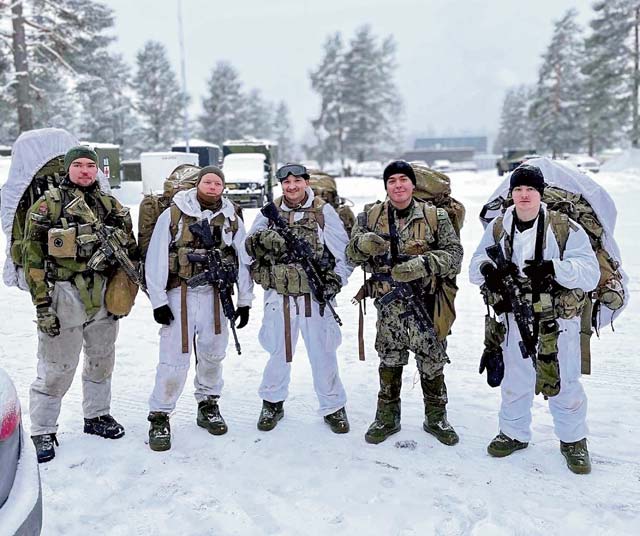During Army exercise Arctic Serpent held for three weeks in February, U.S. Army combat medics and nurses increased surgical interoperability for trauma in arctic conditions with medical counterparts from various NATO countries — including the U.K, the Netherlands, and Finland — during an exchange hosted by the Norwegian military.

“Training in austere environments is important in a near-peer threat,” said Capt. Tynika Reese, an emergency room nurse with the 160th Forward Resuscitative Surgical Detachment from the Field Hospital. “We have to [be prepared] to stay in these conditions for extended periods when facing an enemy whose capabilities are similar to ours because the option to evacuate casualties may not be immediately present.”
The cold weather medical training in Norway prepared Soldiers from the 512th Field Hospital and 519th Hospital Center, 30th Medical Brigade for near-peer conflicts.
Participating teams from each country were divided into two groups. While the surgical teams exchanged practices covering triage, damage control surgery, and post operation care; Combat medics trained extensively on prehospital care as temperatures dropped down to -15 degrees Celsius in the field.
In real combat scenarios, there is a likelihood that patients will have to transfer between medical treatment facilities from various allied forces. So knowing how each of these entities functions in the cold weather conditions is imperative to working effectively, said Reese.
During this time, Capt. Jeevan Bhatta, a certified registered nurse anesthetist with the 160th FRSD, worked alongside a British team and gained familiarity with the assets, capabilities, and personnel organic to a Role 2 Norwegian hospital.
One important lesson that all medical personnel learned quickly was that the challenging weather conditions meant that modifications to priorities of treatment were required.
“Traditional medical treatment follows the MARCH algorithm: Patients are first evaluated for any massive hemorrhage, followed by the airway, next the respiratory system, then the circulatory system, and finally hypothermia. However, hypothermia can cause a lot more problems than some other injuries in these environments, said Bhatta. Therefore, medical personnel first checked for massive hemorrhage and immediately followed with hypothermia considerations.”
Interacting in this environment has taught Staff Sgt. Shneider Altenor, a combat medic with the FRSD, to utilize his critical thinking and build on past training to better take care of patients.
“You figure out real quick that a blanket is not going to stop hypothermia” said Altenor. “I’ve always known that hypothermia is a big deal, but actually being in an environment where you can see the patient’s temperature go down… that is different.”
If medics do not do a good job in prehospital treatment, surgeons will not have a patient to operate on. Therefore, medics always have to adapt and use every opportunity to practice their skills. For example, a heated blanket in the conditions present could only raise a patient’s core temperatures by 1-2 degrees, which means medics must account for the limited effects of their equipment when treating patients.
Throughout the exercise, the team exchanged vast amounts of medical experience while working with other NATO allies and is now even more prepared for future operations in extreme climates.


